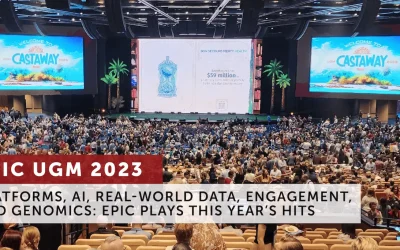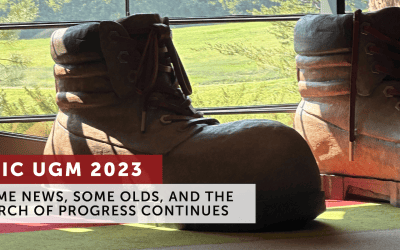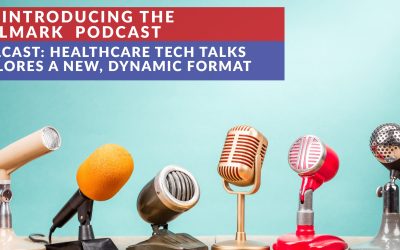Here at Chilmark Research, we’re expanding our reach and growing our team! Elizabeth “Lyz” Kneeland is the latest addition to our analyst team; she brings a variety of skills to the table and we’re excited to add her expertise to the company. The following is a piece that she wrote about coming aboard.
In a decade and a half, I have accumulated experience in the areas of clinical care delivery, research, financial operations of traditional and novel care models, and innovation program development and growth. I have especially enjoyed exploring the complex web of interconnected stakeholders and their nuanced perspectives. When I reflect upon my career to date, I cannot help but recall Steve Jobs’ famous commencement speech given to the 2005 Stanford graduating class, on connecting the dots:
“You can’t connect the dots looking forward. You can only connect them looking backward. So you have to trust that the dots will somehow connect in your future. You have to trust in something — your gut, destiny, life, karma, whatever.”
I graduated from Bryn Mawr College in 2008 with a degree in economics, just as our economy was plunging into a terrible recession (I knew this, of course, because of my degree). I never intended to work in healthcare, but after countless interviews that failed to generate offers, I finally received one from the University of Pennsylvania Health System, for a call center role in patient registration. Surprisingly, I enjoyed the job, but I figured it would just be temporary; something to pay the bills until I landed a more suitable role elsewhere.
I ended up staying at Penn for the next twelve years of my career.
My journey would eventually cover three medical specializations, five roles, and one MBA degree from Drexel that I completed in 2012. My final role at Penn was as the Associate Director of the Innovation Program for Sleep Medicine. I grew the program out of the former Occupational Sleep Medicine program, as we diversified our project mix and added team members. ‘Team Inno’ provided faculty with access to a skilled group that could quickly flesh out protocols and run pilots to test ideas, technology, and workflows, while gathering relevant data for analysis – at a pace far exceeding that of traditional research. Our project mix included several profitable ones that allowed us to take on non-revenue-generating projects as well, while remaining financially self-sufficient as a whole.
I built and ran the first ever commercial telemedicine program at Penn in 2015, which eventually served fourteen states. I managed and supported countless IT implementations of all kinds. One of my most memorable was the development of an API interface that provided PAP therapy data for an occupational population of drivers, with whom we had a commercial contract for care provision via telemedicine in a carveout arrangement with their company. We overlaid this usage data with our records of care team outreach activity (from which one can therefore derive estimated labor cost). This was not only a significant achievement in that we could now quantify the somewhat nebulous concept of ‘care management’ for PAP therapy, but also, it allowed us to generate a visual display of the patient care journey in an intuitive manner. Consider the value-based care goal of reducing unnecessary physician encounters, which logically increases average time between doctor visits. This type of display may help to make those infrequent encounters more meaningful for both provider and patient – a visual display of therapy use data and the care team interactions driving it can arguably tell a far more comprehensive story than the same data summarized in a list.
During this time, I also co-authored research publications, and gave lectures at conferences about our work. Sleep medicine was exciting, it rarely involved blood, and critically, it and introduced me to the world of value-based care, where technology plays a leading role that remains misunderstood by too many stakeholders. There is much work to be done – the first steps involve developing a language that can be used to effectively discuss the capabilities, the limitations, the trade-offs, and so forth. This area is where I feel I can make the greatest difference in my work at Chilmark Research. As this language develops and becomes more refined, where would I shift my focus next? The wise words of Steve Jobs again come to mind. I can only connect the dots looking backward, but I do trust fully in whatever comes my way as I continue my journey forward.




0 Comments